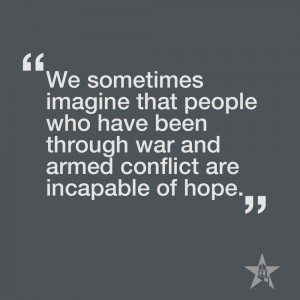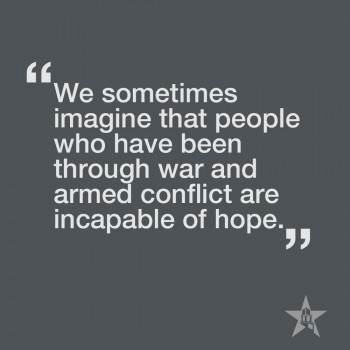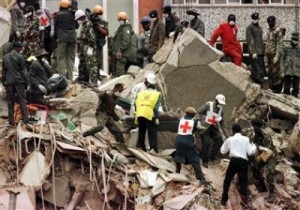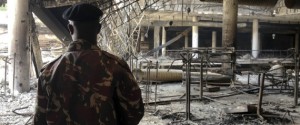During one of the CLEW services, Dr. Marvin McMickle referenced a gospel song sung in many African-American churches: “This joy that I have, the world didn’t give it to me; the world didn’t give it, and the world can’t take it away.” I thought back to a seminary friend, who used to sing it, an African-American friend who invited me into his church, his neighborhood and his life. In my ignorance, I thought of his neighborhood as impoverished, disadvantaged and frankly, “bad,” a neighborhood that I, on my better days, might help to save.
 Little did I know, that neighborhood, and that friend and that church, would help to save me. When my friend took me to his church in his “bad” neighborhood, I met the warmest, most hospitable Christians I had ever known. I met people who had less than I had, but shared more; people who society had pushed to the margins, but who welcomed me into the center; people who had known more suffering than I, but had more joy.
Little did I know, that neighborhood, and that friend and that church, would help to save me. When my friend took me to his church in his “bad” neighborhood, I met the warmest, most hospitable Christians I had ever known. I met people who had less than I had, but shared more; people who society had pushed to the margins, but who welcomed me into the center; people who had known more suffering than I, but had more joy.
That experience recalibrated my spiritual life. I had to wrestle with the obvious fact that I had, in the end, very little to offer these fine Christians. I had more money and possessions, certainly; and yet, in the presence of these good people I realized that these were more liabilities than assets to the spiritual life. My friend’s church exemplified the fruit of the Spirit in a way that I did not. I was stuck in an anxious pattern, unable to discern God’s gifts in my life, and they knew genuine and obvious joy. While I frittered and worried about finding God’s call on my life, they lived with bold confidence that they were God’s people for this time and place. While I gritted my teeth and tried doggedly to save the world (to embarrassingly little effect), they were joyfully operating as the hands and feet of Christ in their community.
 This reality makes me especially excited for this year’s Faith and Justice Symposium, with the theme “Stories of Hope.” We sometimes imagine that people who have been through war and armed conflict are incapable of hope. Places like Somalia, the Ukraine, Iraq, the Sudan (and other nations like Rwanda and Ethiopia before them) become bywords, shortcuts we use to approximate otherwise unimaginable suffering. “There can be no hope there,” we say, “unless those of us who follow Jesus bring hope to the hopeless,” and in so saying we honor not Jesus but ourselves.
This reality makes me especially excited for this year’s Faith and Justice Symposium, with the theme “Stories of Hope.” We sometimes imagine that people who have been through war and armed conflict are incapable of hope. Places like Somalia, the Ukraine, Iraq, the Sudan (and other nations like Rwanda and Ethiopia before them) become bywords, shortcuts we use to approximate otherwise unimaginable suffering. “There can be no hope there,” we say, “unless those of us who follow Jesus bring hope to the hopeless,” and in so saying we honor not Jesus but ourselves.
Yet, of course, the reality is different, and far more joyful: God is already at work in all of these places. There is already hope there because God is there. And it is not merely a bud that one day might flourish, but often amid the poor and war-torn there is a more genuine, a more lasting hope; because it is a hope that quite obviously does not depend on everything being just right, or on the absence of war, or the presence of physical peace, or on stable government or riches. It depends only on God to give it: after all, the world doesn’t give it, and the world can’t take it away. That kind of hope was in short supply in my life before I met my friend. I had a fairly hopeful approach to life, but was always worried about something going wrong, or running afoul of God’s will. In the end, I guess I hadn’t known what it meant to truly hope, to hope without the nagging fear that something could go wrong and, in the process, take my hope and happiness away.
Usually, events like this symposium challenge us to get involved and work for justice. And ultimately, I hope you do that. But before you sign up to help, before you run off to bring Jesus’ light to a dark world, listen to these stories of hope; hear that God is already there, amid all of His children caught in war and conflict, bringing hope to the oppressed. And above all, I pray that you allow yourself to learn from these stories of hope, to learn what real hope is, a hope that might just be sturdier than whatever you call hope today: because the world didn’t give it and the world can’t take it away.



